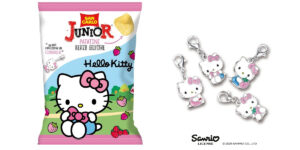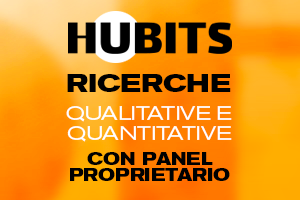Licensing Italia interviewed Craig Bendle (Manager of Product Licensing, The British Museum) to unveil the licensing activities of one of the most relevant cultural institutions in the world.
by Federica Pazzano

When did the British Museum launch its brand licensing program?
C.B.: We first launched our licensing programme in 2015 and it has evolved and grown quite organically. Now, unbelievably nearly a decade on, we’re preparing for our Brand Licensing Europe debut! It’s a real milestone moment for the business and indeed the team are really excited to see how we can use the show as a platform to raise awareness of the Museum, our incredible archive and our dual licensing strategy. This consists of our established ‘traditional’ licensing programme and our exciting new character IP, Bastet, which is based on the world-famous bronze Gayer-Anderson Cat from the Ancient Egyptian collection.
A collection of 1,200 objects is quite extensive. What criteria do you use to select these objects for licensing and how do you develop the strategy and the design?
C.B.: You’re right – there’s a lot to choose from, and we whittled that number down from the Museum’s over 8 million objects! Our current focus is working with partners to develop narratives around the most well-known items in our collection, including the Gayer-Anderson Cat, alongside other famous objects, including The Discobolus, Hokusai’s Great Wave, and the Rosetta Stone, to name just a few.
As for criteria, of course it comes down to recognisability, but also its about the stories we can tell and it’s about what inspires us, our licensing partners and our visitors. We have the daily privilege of being able to explore the galleries and exhibitions at the Museum, which is always one of my favourite ways to get inspired and identify new objects we can use in our programme. But the key, as always, is listening… being open to what excites and interests people. That lies at the heart of everything we do.
As for design, we work alongside external design agencies to explore creative interpretations of objects in a way that is highly commercial and celebrating of objects in new and innovative ways. This investment in ongoing creative design work helps to inform our conversations with potential and existing partners.
Which licensed products, collections or product categories have proven to be the most popular with consumers?
C.B.: We’ve seen great success across various products and categories with quite large regional variations so it’s a bit more nuanced. For example, the Bastet character licensing programme launched in China in 2016 and the success we’ve experienced in that market has inspired the global roll out. Artwork in our Prints & Drawings collection appeals universally and consistently inspires beautifully curated products, especially within the fashion and home decor sectors. We have recently launched a stunning range of tech accessories in collaboration with CASETiFY inspired by hieroglyphs and objects from Ancient Egypt and Sudan.
Who is the primary target audience for your products?
C.B.: The Museum is a museum of the world, for the world and this implies a broad audience for us. Our programme reflects that breadth. We aim to develop products for all ages and demographics to reflect the broad footfall of visitors who enjoy the Museum both physically and online. We see licensing as an innovative way to reach the Museum and its collection out to new audiences globally. Up until now, our focus has been on traditional licensing, but we are also developing our character licensing programme with Bastet, and doing more in the digital space as well. This will help us to engage with younger audiences in new and exciting ways.
Does the museum collaborate with retailers and partner stores for exclusive licensing agreements?
C.B.: We are happy to offer exclusivity in the market place should the need arise. We understand how important and valuable that can be in certain contexts. From our side, it also focuses the mind and ensure the creative inputs are targeted and on point.
What are the latest advancements in your licensing strategy? Could you share some insights on the recent development of the Bastet animation and its role in expanding your licensing portfolio?
C.B.: Our licensing strategy now follows a two-pronged approach: it is anchored by our curated selection of 1,200 objects from the Museum’s collection and, more recently, enhanced by the integration of our character IP, Bastet.
In terms of advancements, we’ve recently launched new collaborations with cross-category partners, including CASETiFY, Signare Tapestry and the Sandbox, all of which are in alignment with our strategy to diversify and build upon the Museum’s already strong CP programme. Watch this space for some more exciting announcements soon!
As for Bastet, the character IP is helping us reach new audiences by offering an accessible and relatable entry point into the Museum, appealing to young people, families, and Millennials. Bastet’s success both on-site at the Museum and in China marks a first for any museum, and we’re excited about the opportunities this IP will continue to unlock for us in the future.
The British Museum will attend the Brand Licensing Europe in London. Visit The British Museum at Stand C250.






